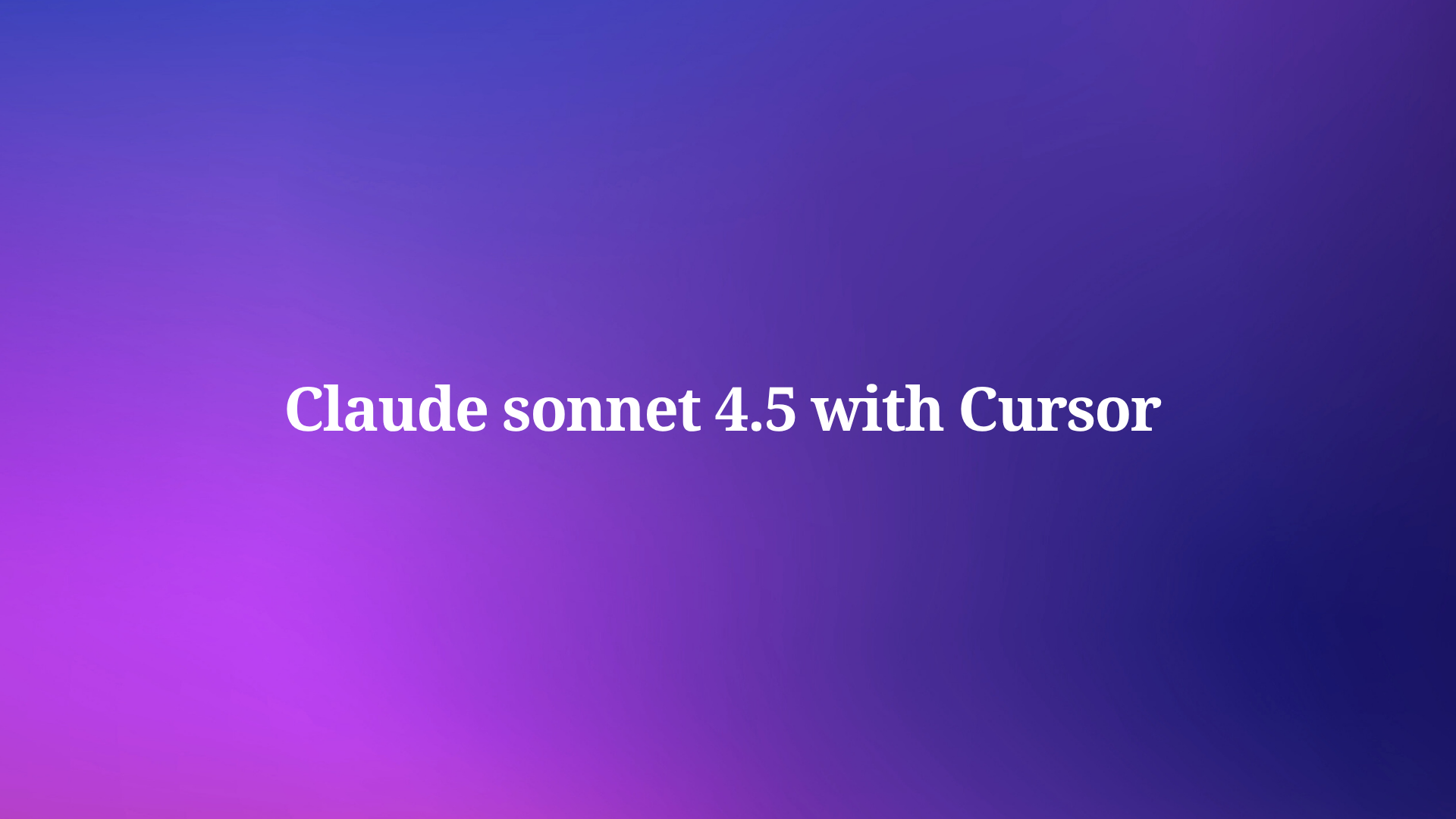Developers constantly seek tools that enhance efficiency and accuracy in coding environments. Claude Sonnet 4.5, the latest model from Anthropic, stands out as a powerful AI assistant tailored for complex coding, reasoning, and agent-building tasks. Engineers integrate this model seamlessly with Cursor, an AI-powered code editor, to accelerate development workflows. This combination allows users to generate code, debug issues, and reason through intricate problems directly within their IDE.
Transitioning from traditional methods, Claude Sonnet 4.5 introduces substantial improvements in performance metrics. Users report faster processing and more precise outputs, which directly impact daily coding sessions.
Understanding Claude Sonnet 4.5: Key Features and Benchmarks
Anthropic designed Claude Sonnet 4.5 to excel in areas where previous models fell short. The model achieves top scores in coding evaluations, making it ideal for building sophisticated agents and handling computer-based tasks. For instance, it leads the SWE-bench Verified leaderboard with a 77.2% score, demonstrating its ability to solve real-world software engineering problems. Additionally, it maintains focus during extended tasks, often exceeding 30 hours of autonomous coding.
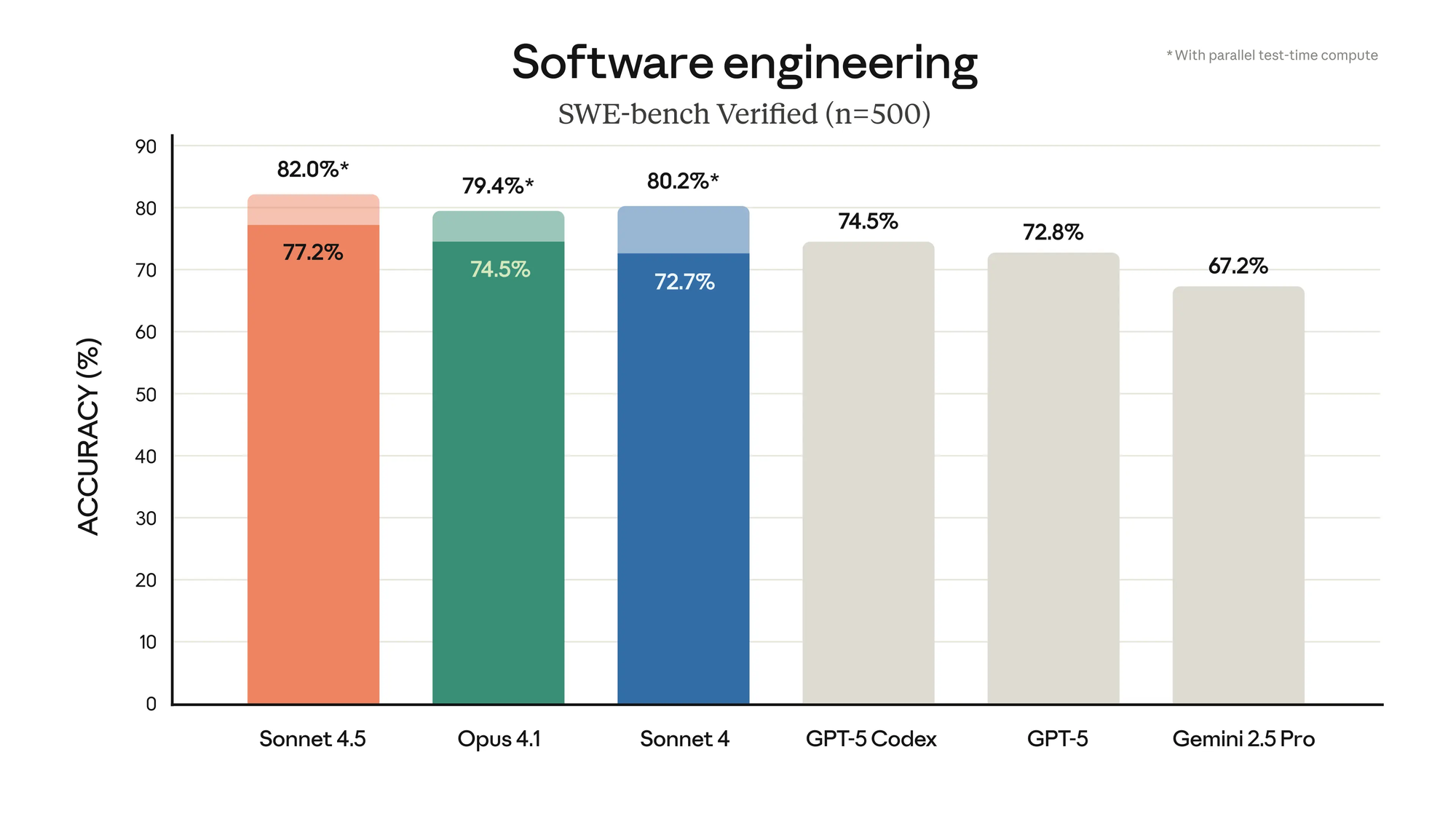
Furthermore, Claude Sonnet 4.5 shines in reasoning and math benchmarks. It scores 87.0% on the AIME 2025 competition math test without tools, reaching 100% when using Python mode. This capability stems from enhanced domain-specific knowledge in fields like finance, law, and STEM.
This table highlights how Claude Sonnet 4.5 outperforms competitors in most categories, particularly in agentic coding and terminal tasks. Developers leverage these strengths to tackle multi-step problems efficiently.
Shifting focus to safety, Anthropic emphasizes alignment in Claude Sonnet 4.5. The model reduces undesirable behaviors such as sycophancy and deception, ensuring reliable outputs for enterprise applications. This alignment makes it a trustworthy choice for sensitive coding environments.
Improvements Over Previous Models
Claude Sonnet 4.5 builds on its predecessors with notable enhancements. Compared to Claude Sonnet 4, it improves OSWorld performance from 42.2% to 61.4%, enabling better handling of real-world computer interactions. Similarly, it boosts AIME scores significantly, reflecting stronger mathematical reasoning.
The model introduces features like context editing and a memory tool in the API, which help manage long-running tasks without exceeding context limits. These tools allow developers to clear stale context automatically and store information externally.
Moreover, upgrades in Claude Code include checkpoints for saving progress and rolling back changes instantly. A refreshed terminal interface and VS Code extension bring Claude directly into development workflows, facilitating seamless integration.
Transitioning to practical applications, these improvements enable Claude Sonnet 4.5 to analyze data, create files, and visualize insights in familiar formats. Users now generate spreadsheets, slides, and documents within conversations, streamlining productivity.
Accessing Claude Sonnet 4.5: Platforms and Availability
Anthropic makes Claude Sonnet 4.5 widely available across multiple platforms. Developers access it via the Claude API with the model name claude-sonnet-4-5.
Furthermore, the model appears in Claude apps and the Developer Platform, serving as a drop-in replacement for Sonnet 4 with enhanced performance at identical pricing. For Cursor users, Sonnet 4.5 is readily available as both a regular and thinking model, included in free plans with API fees matching Sonnet 4.
Shifting to mobile and browser access, the Claude for Chrome extension leverages Sonnet 4.5 for tasks like navigating websites and filling forms. This extension, now open to waitlist participants, enhances browser-based coding.
Pricing Details for Claude Sonnet 4.5
Anthropic maintains competitive pricing for Claude Sonnet 4.5, aligning it with Sonnet 4. Input costs start at $3 per million tokens for prompts up to 200K tokens, rising to $6 for longer ones. Output costs are $15 per million for shorter prompts and $22.50 for extended ones.
Additionally, prompt caching offers savings: write costs are $3.75 per million for up to 200K tokens, with read costs at $0.30. This feature, with a 5-minute TTL, reduces expenses by 50% on repeated queries, benefiting API-heavy projects.
For Cursor integrations, usage incurs the same rates, with thinking models using two requests per interaction. Developers optimize costs by selecting appropriate plans.
What Is Cursor and Why Pair It with Claude Sonnet 4.5?
Cursor serves as an AI-enhanced code editor that accelerates programming through natural language prompts. It supports features like code generation, refactoring, and debugging, making it popular among developers.
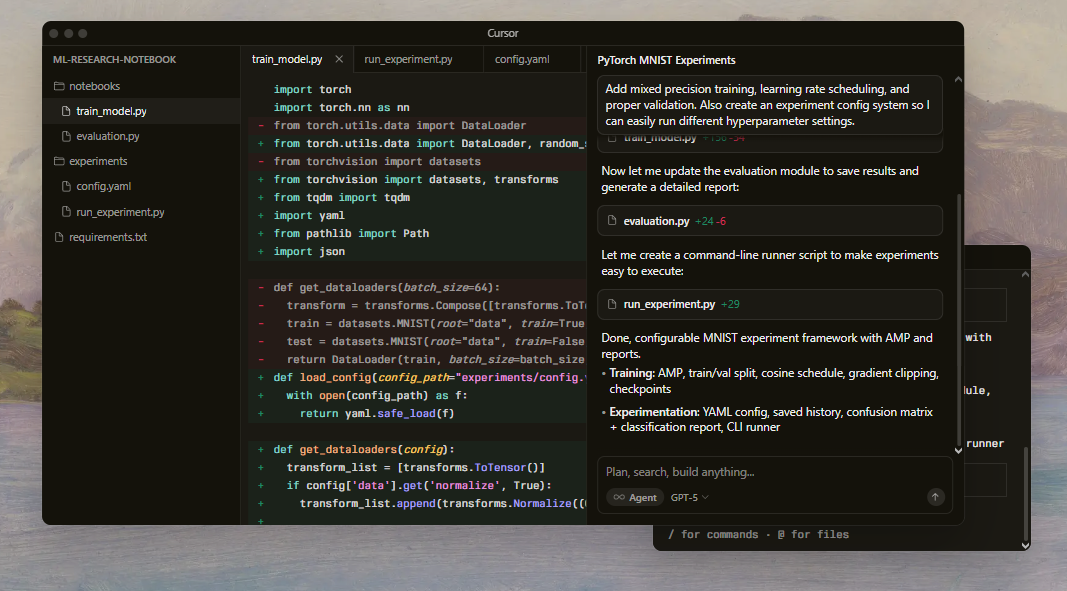
Pairing Cursor with Claude Sonnet 4.5 elevates these capabilities. The model's superior coding scores ensure more accurate suggestions and faster iterations. Users report that Sonnet 4.5 processes tasks quicker than predecessors, with less "thinking" time and more direct examination.
Moreover, Cursor's Auto Mode potentially incorporates Sonnet 4.5 for deeper reasoning, though it typically favors efficient models. This synergy allows engineers to handle complex projects effortlessly.
Step-by-Step Guide: Setting Up Claude Sonnet 4.5 in Cursor
Setting up Claude Sonnet 4.5 in Cursor requires minimal effort. First, install Cursor from its official website and create an account if needed.
Next, navigate to the settings panel within Cursor. Select the model dropdown and activate Claude Sonnet 4.5.
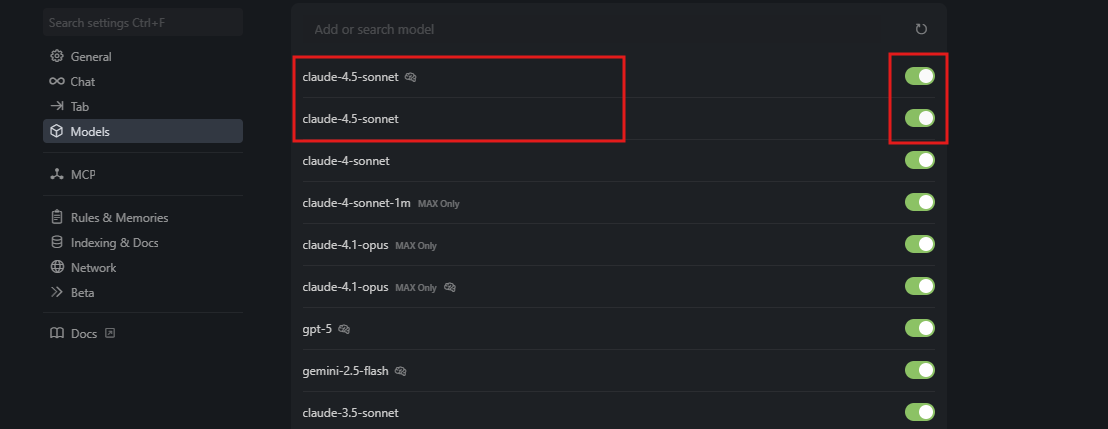
Then, configure preferences for thinking mode if desired, which leverages Sonnet 4.5's extended reasoning for intricate tasks.
Choose the desired Claude 4.5 Sonnet model for your project and start coding
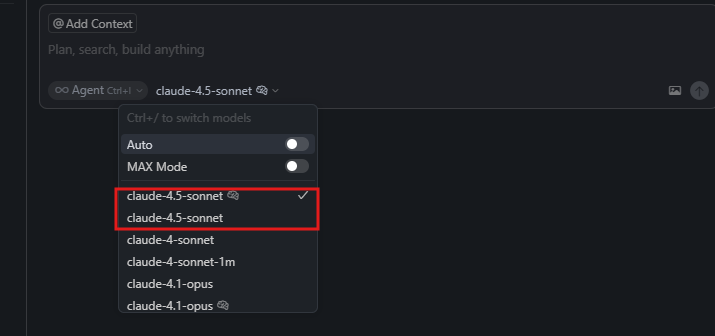
Transitioning to advanced configurations, enable prompt caching via Apidog to manage API calls efficiently, reducing latency in repeated interactions.
Using Claude Sonnet 4.5 for Coding Tasks in Cursor
Developers employ Claude Sonnet 4.5 in Cursor for various coding scenarios. For example, when building a web application, prompt the model to generate boilerplate code for a React component.
The AI responds with structured, error-free code, incorporating best practices. Additionally, use it for debugging: highlight a buggy section and ask for fixes, receiving step-by-step explanations.
Furthermore, in data analysis projects, Claude Sonnet 4.5 creates Python scripts for processing datasets, visualizing results with libraries like Matplotlib.
Shifting to agent development, instruct the model to build autonomous agents that handle multi-step workflows, such as API integrations.
To enhance this, incorporate Apidog for testing generated APIs, ensuring robustness before deployment.
Advanced Applications: Building Agents and Handling Long Tasks
Claude Sonnet 4.5 excels in agentic tasks within Cursor. Users construct complex agents using the Claude Agent SDK, coordinating subagents for automation.
For long-running tasks, leverage checkpoints to save states and rollback if errors occur. This feature prevents data loss during extended coding sessions.
Moreover, the memory tool stores information outside the context window, enabling persistent knowledge across interactions.
In Cursor, apply these for projects like automated testing suites, where Sonnet 4.5 reasons through test cases efficiently.
Optimizing Performance: Tips and Best Practices
To maximize Claude Sonnet 4.5 in Cursor, craft clear prompts. Specify language, frameworks, and constraints for better outputs.
Furthermore, use thinking mode for reasoning-heavy tasks, allowing the model to deliberate before responding.
Monitor API usage to stay within budgets, employing prompt caching where possible.
Integrate external tools like Apidog for complementary functions, such as API mocking during development.
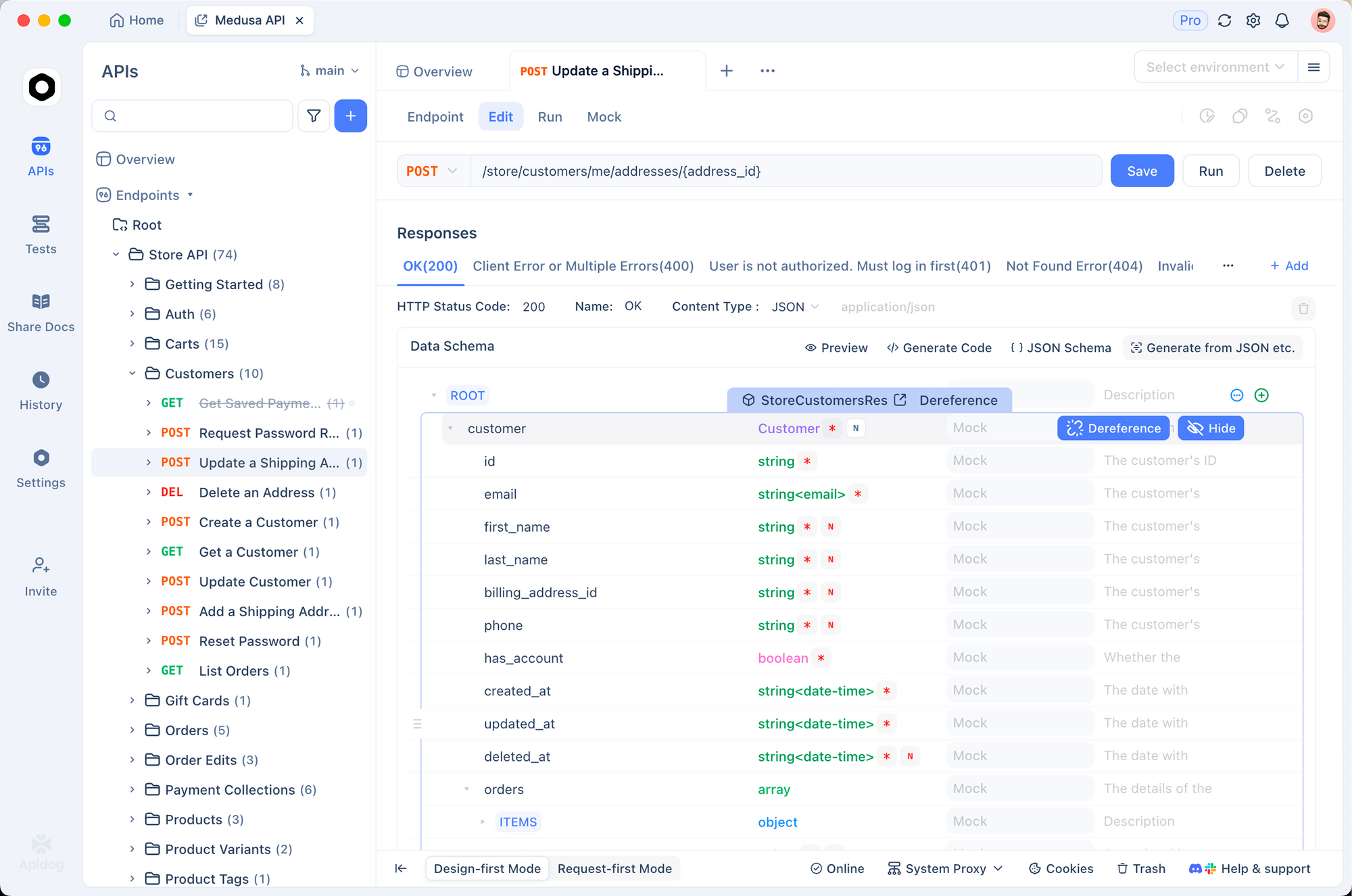
Regularly update Cursor to access the latest model features.
Potential Challenges and Solutions
While powerful, Claude Sonnet 4.5 may incur higher costs for thinking modes. Mitigate this by selecting regular mode for simple queries.
Some users question its superiority over GPT models; test personally to confirm fit.
Address context limits with the memory tool, ensuring seamless long tasks.
The Future of AI Coding with Claude Sonnet 4.5 and Cursor
Claude Sonnet 4.5 sets new standards for AI-assisted coding in Cursor. As Anthropic iterates, expect further enhancements in reasoning and integration.
Developers who adopt this duo position themselves for increased efficiency.
In conclusion, integrating Claude Sonnet 4.5 with Cursor empowers teams to tackle ambitious projects. Start today and experience the difference.
